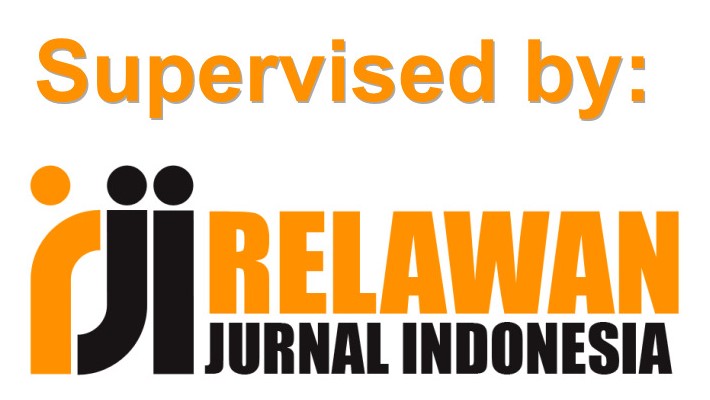Pelatihan Role-Playing dalam Scaffolding Materi Sistem Organ pada manusia Bagi Siswa
DOI:
https://doi.org/10.31100/matappa.v4i1.1233Keywords:
Role-playing, Scaffolding, Sistem OrganAbstract
References
Anderson, L. W., & Krathwohl, D. R. (2001). A taxonomy for learning, teaching and assessing: a revision of blooms taxonomy of educational objective (L. W. Anderson, D. R. Krathwohl Peter W Airasian, K. A. Cruikshank, R. E. Mayer, P. R. Pintrich, J. Raths, & M. C. Wittrock (Eds.)). Addison Wesley Longman, Inc. https://www.uky.edu/~rsand1/china2018/texts/Anderson-Krathwohl - A taxonomy for learning teaching and assessing.pdf
Anderton, R. S., Chiu, L. S., & Aulfrey, S. (2016). Student Perceptions to Teaching Undergraduate Anatomy in Health Sciences. International Journal of Higher Education. https://doi.org/10.5430/ijhe.v5n3p201
Bhattacharjee, S., & Ghosh, S. (2013). Usefulness of role-playing teaching in construction education : A systematic review. Annual International Conference Proceedings.
Çimer, A. (2012). What Makes Biology Learning Difficult and Effective: Students’ Views. Educational Research and Reviews, 7(3), 61–71. https://doi.org/10.5897/ERR11.205
Clapper, T. C. (2015). Cooperative-Based Learning and the Zone of Proximal Development. Simulation and Gaming. https://doi.org/10.1177/1046878115569044
Cortiella, C., & Horowitz, S. H. (2014). The state of learning disabilities: Facts, trends and emerging Issues. National Center for Learning Disabilities.
Etobro, A. B., & Fabinu, O. E. (2017). Students’ perceptions of difficult concepts in biology in senior secondary schools in Lagos state. Global Journal of Educational Research. https://doi.org/10.4314/gjedr.v16i2.8
Fani, T., & Ghaemi, F. (2011). Implications of Vygotsky’s zone of proximal development (ZPD) in teacher education: ZPTD and self-scaffolding. Procedia - Social and Behavioral Sciences. https://doi.org/10.1016/j.sbspro.2011.11.396
Harrison, E. (2018). Role-Playing Activity to Demonstrate Diffusion Across a Cell Membrane. Journal of Microbiology & Biology Education. https://doi.org/10.1128/jmbe.v19i2.1576
Harrison, E. (2020). Role-Playing Activity to Demonstrate the Electron Transport Chain. American Biology Teacher. https://doi.org/10.1525/abt.2020.82.5.338
John, W. (2013). Psychology for the classroom: Constructivism and social learning. In Psychology for the Classroom: Constructivism and Social Learning. https://doi.org/10.4324/9780203855171
Lefstein, A., Vedder-Weiss, D., Tabak, I., & Segal, A. (2018). Learner agency in scaffolding: The case of coaching teacher leadership. International Journal of Educational Research. https://doi.org/10.1016/j.ijer.2017.11.002
Lieu, R. M., Gutierrez, A., & Shaffer, J. F. (2018). Student Perceived Difficulties in Learning Organ Systems in an Undergraduate Human Anatomy Course. HAPS Educator. https://doi.org/10.21692/haps.2018.011
Lourenço, O. (2012). Piaget and Vygotsky: Many resemblances, and a crucial difference. New Ideas in Psychology. https://doi.org/10.1016/j.newideapsych.2011.12.006
Macy, L. (2016). Bridging Pedagogies: Drama, Multiliteracies, and the Zone of Proximal Development. Educational Forum. https://doi.org/10.1080/00131725.2016.1173750
Maryani, I., Husna, N. N., Wangid, M. N., Mustadi, A., & Vahechart, R. (2018). Learning difficulties of the 5th grade elementary school students in learning human and animal body organs. Jurnal Pendidikan IPA Indonesia. https://doi.org/10.15294/jpii.v7i1.11269
Morales, R. (2007). Empowering Your Pupils Through Role-Play. In Empowering Your Pupils Through Role-Play. https://doi.org/10.4324/9780203935767
Downloads
Published
Issue
Section
Citation Check
License
Jurnal ini memberikan akses terbuka langsung dengan prinsip bahwa membuat penelitian tersedia secara bebas untuk publik mendukung pertukaran pengetahuan global yang lebih besar.
Semua artikel yang diterbitkan dapat di Akses secara Terbuka atau Gratis untuk semua orang baik untuk dibaca maupun diunduh di bawah lisensi CC-BY.
Ppenulis mempertahankan kepemilikan hak cipta untuk artikel mereka, tetapi penulis memberikan izin kepada orang lain untuk menggunakan konten publikasi di Matappa secara keseluruhan atau sebagian asalkan karya aslinya dikutip dengan benar.
Hak cipta mencakup hak eksklusif untuk mereproduksi dan menyampaikan artikel dalam semua bentuk dan media, termasuk cetak ulang, foto, mikrofilm dan reproduksi serupa lainnya, serta terjemahan. Reproduksi bagian manapun dari jurnal ini, penyimpanannya dalam basis data dan transmisi dengan bentuk atau media apa pun, seperti elektronik, salinan elektrostatik dan mekanik, fotokopi, rekaman, media magnetik.

MATAPPA is licensed under a Creative Commons Attribution 4.0 International License.








